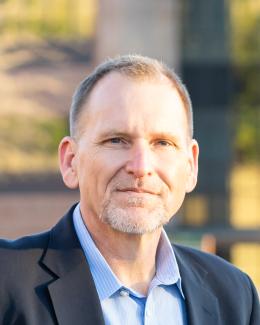As part of DOE’s HPC4Mobility initiative ORNL researchers developed machine learning algorithms that can control smart traffic lights at intersections to facilitate the smooth flow of traffic and increase fuel efficiency.
A modern, healthy transportation system is vital to the nation’s economic security and the American standard of living. The U.S. Department of Energy’s Oak Ridge National Laboratory (ORNL) is engaged in a broad portfolio of scientific research for improved mobility, ranging from better batteries and strong, lightweight materials, to the use of artificial intelligence for smoother traffic flow and fuel savings, to solutions for connected and automated vehicles, and the development of advanced fuel and engine technologies.
For more than 20 years, ORNL has accelerated the pace of research and development for new materials and next-generation systems and provided decision-making tools for sustainable transportation, creating economic opportunity by improving the energy efficiency of vehicles to support a robust transportation system for people and commerce.
“ORNL’s mobility research drives scientific innovation as well as local, regional, and national economies,” said Moe Khaleel, associate laboratory director for Energy and Environmental Sciences at ORNL. “In partnership with industry, academia, and other national laboratories, ORNL is well positioned to continue making technological breakthroughs to meet our nation’s needs for efficient, secure transportation.”

ORNL scientists and engineers are focused on breakthroughs to improve mobility systems and reduce emissions in key areas: electrification, automation and connectivity, net-zero carbon fuels and future fleets. This cross-disciplinary work is focused at DOE’s National Transportation Research Center at ORNL, the only open-access user facility dedicated to transportation science in DOE’s laboratory system.
Electrification
ORNL’s work in electrification ranges from new materials for motors and batteries to innovations in charging systems. Oak Ridge was the first lab to demonstrate a 20-kilowatt wireless charging system with a single coil for passenger electric vehicles (EVs), which has since been scaled up to 120 kilowatts—on a path to the convenience of a gas station fill-up. The lab is currently designing and installing a bidirectional wireless charging system for delivery trucks. Researchers also are studying the feasibility of dynamic wireless charging, in which vehicles would be recharged wirelessly by driving over roadways equipped with special charging pads.
The lab’s rich legacy of materials research is also leveraged in the key area of battery design. Scientists recently developed a new technique to characterize and measure the function of electrolytes and electrodes, for instance—a significant development in the quest for batteries with higher performance and better stability. Testing of near-commercial production scaleup of various battery breakthroughs is available at ORNL, where researchers analyze every aspect of battery production, from raw materials and electrode dispersion preparation to finished product and performance testing.
ORNL is also seeking to solve some of the most critical materials challenges in the manufacturing of electric vehicles. Researchers developed a prototype EV motor that uses domestic ferrite permanent magnets rather than the imported, rare-earth magnets common in motors today. The motor generated 75% higher efficiency than a comparably sized commercial EV motor.
Automation and connectivity
To study the potential benefits of connected and automated vehicles (CAVs) on roadways in the near future, ORNL researchers developed a simulation framework that analyzes the impact of partial market penetration of CAVs on fuel consumption, travel time and traffic flow in a merging on-ramp scenario under varying traffic volumes. Research demonstrated that an increased number of CAVs communicating and coordinating driving activity stabilizes traffic flow and, depending on the traffic volume, can reduce fuel use by more than 40 percent. ORNL scientists in collaboration with National Renewable Energy Laboratory (NREL) scientists are developing novel algorithms that could be used to enhance the perception and control of autonomous driving agents. The work includes testing the ORNL-created MENNDL deep-learning algorithm that can accelerate the generation of a custom neural network, a type of computational system that mimics the human brain.
ORNL, in collaboration with NREL, is also researching how to improve regional transportation networks, using Chattanooga, Tennessee, as a testbed. Chattanooga was chosen because it is a Smart City, equipped with radar detectors every mile, numerous cameras to monitor traffic flow, and instrumented intersections with additional sensors and cameras. The city has the nation’s fourth busiest traffic corridor, Interstates 24 and 75. To tackle this high volume, ORNL researchers are working with the city to develop a digital twin, or living model of the area’s transportation network to enable solutions for smoother traffic patterns, and more energy efficient freight transport. The multi-year project has the potential to reduce energy usage for the region by up to 20 percent.
Net-zero carbon fuels
The goal of net-zero carbon fuels is to reduce the footprint of propulsion fuels to help mitigate the release of greenhouse gases in transportation applications. ORNL is evaluating carbon capture, conversion and bioconversion for renewable energy in biofuels, e-fuels and hydrogen production. Researchers use material design capabilities to study bio-inspired models, catalysts and soft materials. Characterization and analysis techniques such as advanced microscopy, neutrons, and computational modeling are deployed to gain a deeper understanding for optimizing production of alternative fuels. Future work in net zero carbon fuels includes integrating renewable energy sources, such as wind and solar, developing new feedstocks to improve e-fuel and biofuel yields, and testing and optimizing internal combustion engine performance with alternative fuels.
Future fleets
Working with DOE’s SuperTruck initiatives, ORNL is developing and demonstrating technologies to more than double the freight efficiency of Class 8 trucks, commonly known as 18-wheelers. These trucks haul the majority of the nation’s goods and use billions of gallons of fuel a year, accounting for a sizable chunk of total transportation energy usage. Through SuperTruck, ORNL is working with industry partner Cummins to design a more efficient engine and drivetrain and vehicle technologies. By deploying novel diagnostics, ORNL is enabling fuel-efficient engine modeling and design, resulting in higher freight efficiency and an increase in fuel efficiency. ORNL is also working with industry partner Daimler through SuperTruck to perform engine and vehicle simulation, engine and powertrain-in-the-loop experiments, and advanced combustion strategies to improve efficiency and emissions, and emissions characterization and control. Research has demonstrated dual-fuel, low-temperature combustion with natural gas and diesel fuel for 115% higher freight efficiency, doubling the truck’s miles per gallon.
DOE initiatives
ORNL leads two key transportation initiatives – Co-Optima and HPC4Mobility. Co-Optima (Co-Optimization of Fuels & Engines) recently identified six blendstocks that exhibit the greatest potential to dramatically increase efficiency with fewest barriers when combined with petroleum-based fuels in boosted spark-ignition engines for light-duty vehicles. HPC4Mobility (High Performance Computing) identifies computing capabilities to speed the discovery, design and development of efficient mobility systems.
In one of the first HPC4Mobility projects, ORNL researchers developed machine learning algorithms that can control smart traffic lights at intersections to facilitate the smooth flow of traffic and increase fuel efficiency.
ORNL also manages FuelEconomy.gov, DOE’s most visited website, which provides consumers with tools and information for selecting new vehicles and saving fuel. Researchers develop new decision-making tools for the site and translate ORNL vehicle research into driving tips about factors that affect fuel economy such as air conditioner use, vehicle speed, extreme temperatures, and cargo carriers.
Ongoing transportation research at ORNL will continue to provide key expertise in modeling, simulation and integration of advanced vehicle technologies, offering valuable insight on the potential benefits for hybrid electric, plug-in hybrid vehicles, advanced powertrain vehicles, and connected and automated vehicles.
Each year, ORNL hosts thought leaders from around the globe at an event designed to apply multidisciplinary expertise to the most challenging issues facing the transportation sector. The Smoky Mountains Mobility Conference engages experts from industry, academic, national laboratories and government to accelerate a more efficient, safe, and secure mobility future. The annual event launched in 2018, providing a unique opportunity for scientists from the nation’s top research institutions to share information and ideas with industry and policymakers. A key theme for 2019’s meeting is the race to net-zero carbon fuels and zero congestion for a more efficient, safe, and secure mobility future. More information can be found on the event’s website.
ORNL’s mobility research is supported by the DOE Office of Energy Efficiency and Renewable Energy.
ORNL is managed by UT-Battelle for the Department of Energy's Office of Science, the single largest supporter of basic research in the physical sciences in the United States. DOE’s Office of Science is working to address some of the most pressing challenges of our time. For more information, please visit https://energy.gov/science.




